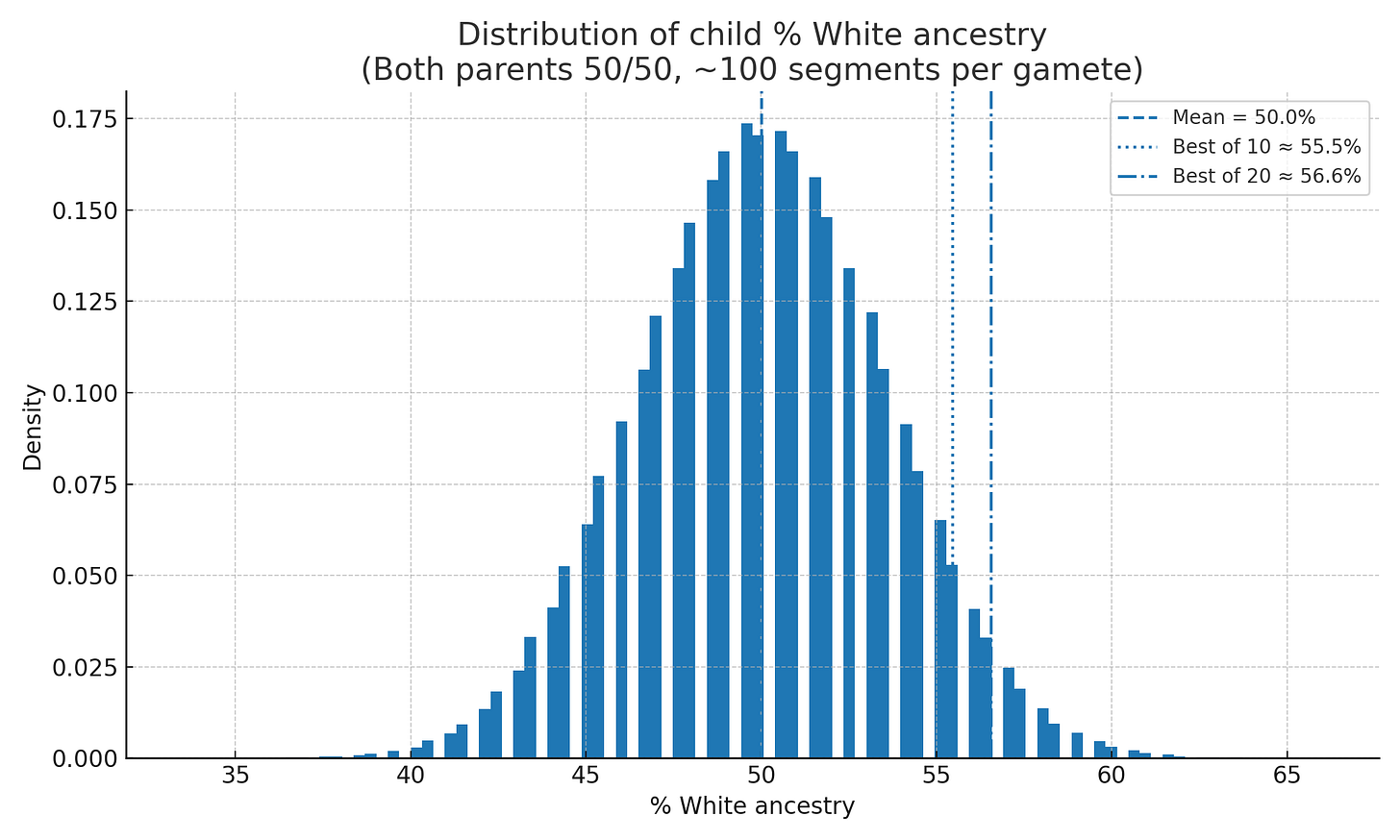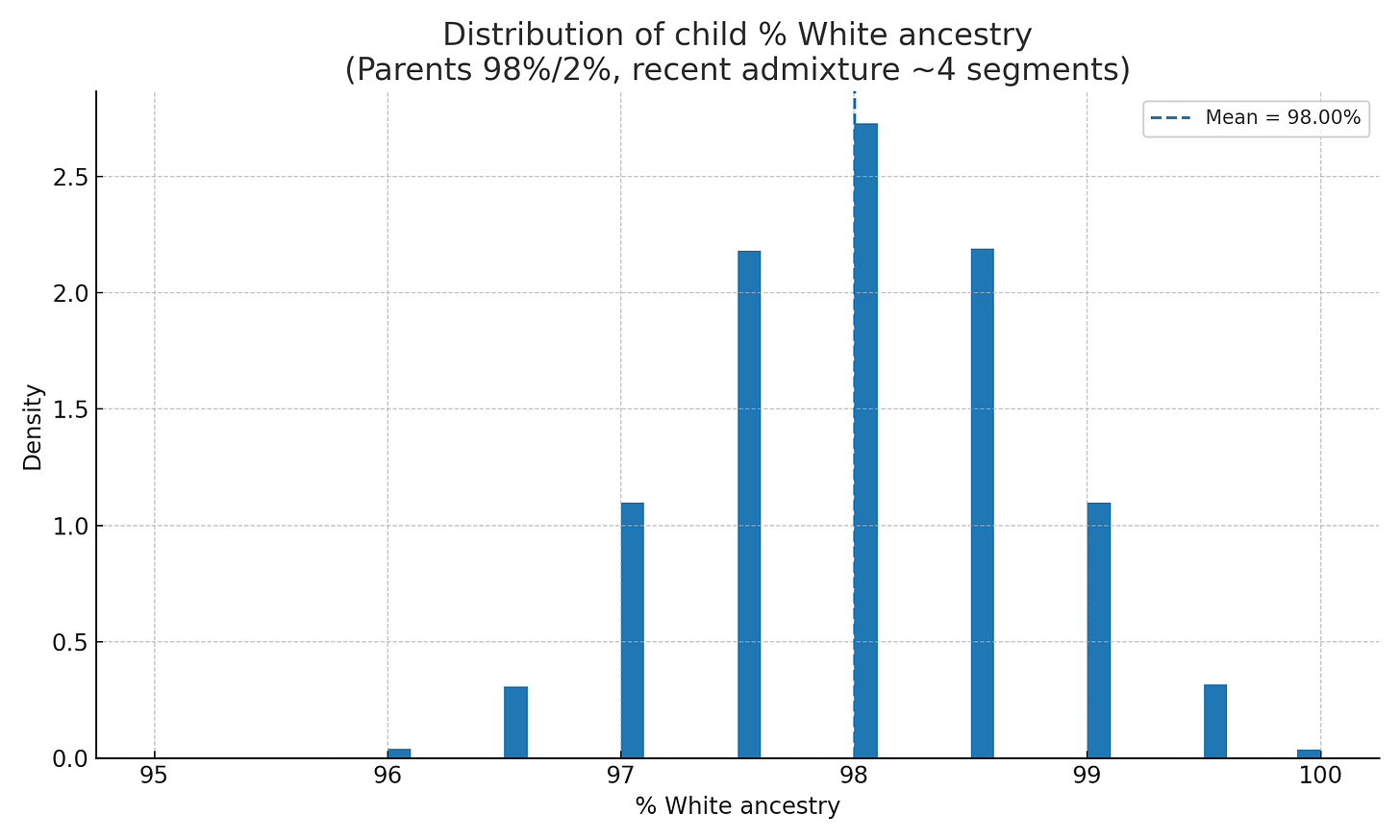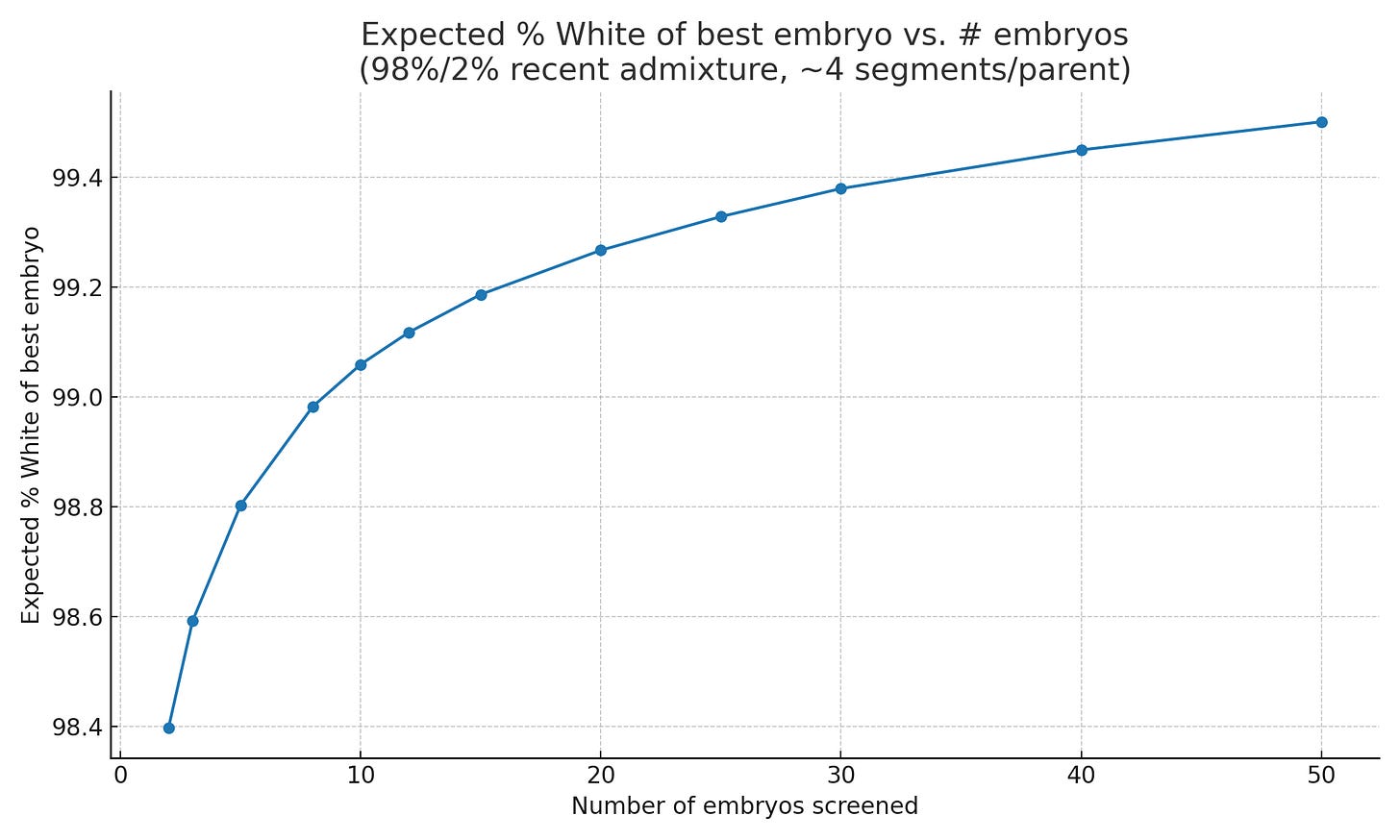Can You "Choose" Your Baby's Ancestry? The Science of Embryo Selection
Subscribe free to get weekly insights that don’t make it into mainstream coverage. Paid members unlock deep dives + exclusive apps for exploring the data yourself.
Recently, a new embryo selection company called Herasight made headlines by promising to reduce the risk of genetic disease and even increase the chances of certain desired outcomes, such as higher IQ or greater height. While some hailed it as a breakthrough, critics immediately raised ethical concerns—arguing that such technology could be misused. Among the criticisms was the worry that parents might try to select for children with certain ancestries, for example, preferring Northern European or Japanese backgrounds.
That sparked my curiosity: is this actually possible? Could embryo selection meaningfully change a child’s ancestry proportion? To find out, I decided to explore the genetics behind the idea, running some simulations to see how ancestry proportions actually vary between siblings.
How ancestry is inherited
Every child inherits half their DNA from each parent. If a parent is 50% African and 50% European, their eggs or sperm carry segments of both ancestries. Which segments get passed on depends on recombination—nature’s shuffling process. That means children can end up with slightly more one ancestry than another.
Simulation results: how much do siblings vary?
I simulated thousands of “virtual families” to measure sibling variation in ancestry proportions.
Scenario A (Both parents 50/50):
Children average ~50% European ancestry, with a standard deviation of ~3.5 points when modeled with ~100 ancestry segments per gamete (longer tracts, more variance). Out of 10 embryos, the most tilted might reach ~55.5%. With 20 embryos, the maximum climbs to ~56.6%.Scenario B: Both parents 98% / 2%.
Children average ~98% majority ancestry. The variation is less than 1 percentage point. The chance of producing a 100% “pure” child is effectively zero, because the minority ancestry is scattered across many small DNA fragments that almost always get passed on.
These results are shown in the charts below:
Scenario A:
Scenario B:
And in detail:
At 50/50, sibling ancestry typically varies by ~3 percentage points.
At 25/75, the variation is ~2.8 points.
At 10/90, it’s ~2 points.
At 98/2, variation is less than 1 point.
What this means in practice
Balanced ancestry (50/50): Parents might select embryos to tilt a child a few percentage points one way or the other. For example, out of 20 embryos, the most “European-leaning” might be ~60% instead of 50%.
Skewed ancestry (98/2): If the admixture is ancient, there’s almost no room to move. Siblings will all hover around 98% with tiny differences. Achieving 100% in one generation is essentially impossible.
Recent vs. older ancestry
Consumer ancestry companies like 23andMe often report cases where siblings differ by several percentage points in small ancestries—for example, one sibling showing 0% and another 5–10%. How can this happen if our simulations suggest that 0% is virtually impossible in a 98/2 case?
The answer is that these differences usually come from recent admixture, where the minority ancestry is carried in just a few long tracts. In that situation, recombination may pass none of those tracts to one child, and multiple to another. This produces much higher variance, and occasionally a truly 0% child.
But another part is measurement error. Consumer tests like 23andMe use SNP arrays that sample only a fraction of the genome, and their ancestry algorithms are probabilistic. This means that very small ancestry fractions can swing between 0% and a few percent simply due to limited data and statistical uncertainty. So the sibling differences reported by testing companies can be exaggerated compared to the true underlying inheritance. This issue is further compounded when siblings are tested using different genotyping kits, each with its own set of SNPs.
By contrast, when the minority ancestry is many generations old, it has been broken up into dozens or hundreds of tiny pieces. These fragments are scattered so widely that every child inherits at least some of them, making 0% essentially impossible.
The histogram below shows a simulation for the recent-admixture case (98%/2% with ~4 large minority segments per parent). Here, about 0.4% of children came out 100% White, consistent with real-world sibling reports.






